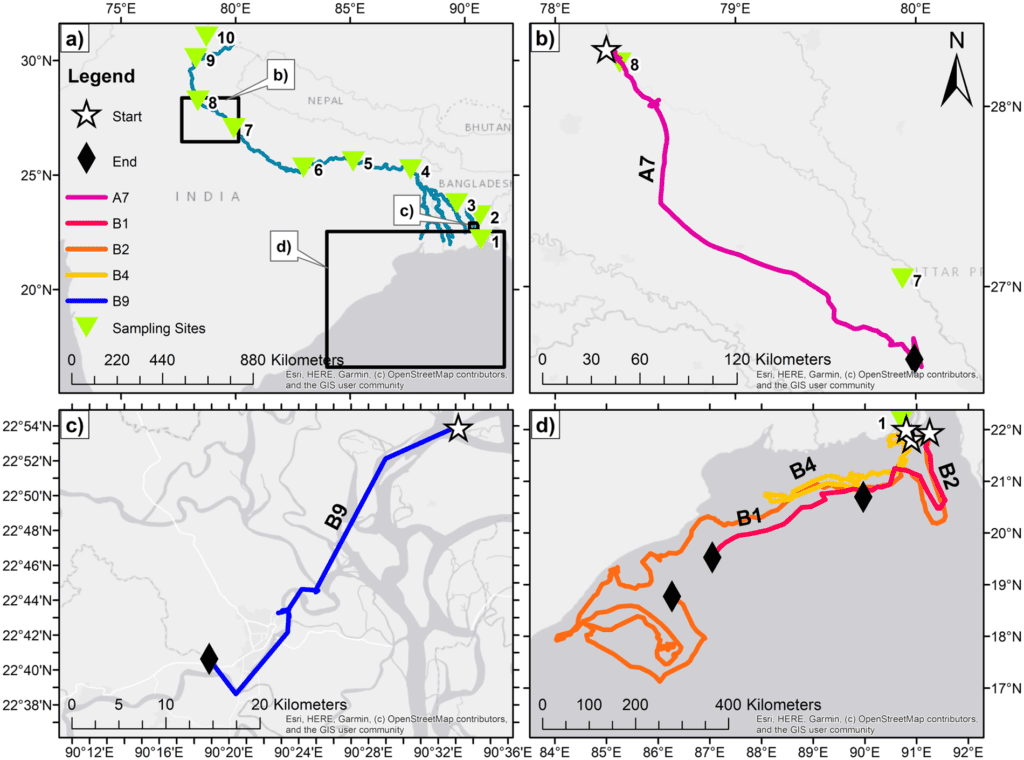Providing water to nearly half a million people, the Ganges river is one of the most important in the world — and also one of the most polluted. It’s packed with plastic bottles, bags, and other items, which later end up in the ocean. Now, researchers have proved those bottles can travel thousands of kilometers in just a few months, shedding light on the extent of plastic pollution.

Plastics make up to 12% of the global waste stream, being increasingly recognized as a threat to biodiversity, habitat quality, human health, and livelihoods across the globe. To make matters even worse, the amount of plastic discarded every year seems to be steadily on the rise.
A substantial amount of marine plastic debris is thought to originate from inland sources, with rivers acting as major transport pathways. Recent studies estimate that plastic pollution transported via rivers could account for up to 70–80% of plastics present in the marine environment, associated with urban centers. But tracking sources of plastic and how they’re transported through the environment has proven challenging.
Recently, there have been several novel efforts of utilizing technology in the tracking of plastic litter. The GhostNet project focused on ghost gear tracking, using oceanic models, drifter buoys, satellite imagery, and remote sensing instruments to locate potential convergence areas where nets were likely to accumulate.
In a new study, researchers from the University of Exeter and the Zoological Society of London (ZSL) placed a GPS and satellite tags in plastic bottles in the Ganges and the Bay of Bengal. The maximum distance they tracked was 2,845km (1,768 miles) in 94 days, which shows how global the plastic pollution problem is.
“Our ‘message in a bottle’ tags show how far and how fast plastic pollution can move,” said lead author Dr. Emily Duncan of the University of Exeter in a statement. “It demonstrates that this is a truly global issue, as a piece of plastic dropped in a river or ocean could soon wash up on the other side of the world.”

The Ganges River is one of the largest river systems in the world with the surrounding basin having a population of several hundred million people. It holds enormous cultural, religious, and industrial significance. Rapid population growth in its basin has also fueled agricultural development, urbanization, and industrialization along the river.
Recent estimates of global riverine plastic emissions consider the Ganges the second largest contributing river to ocean plastic pollution (after the Yangtze River) with a computed input of 0.12 million tons per year. But field data are limited and there’s a knowledge gap in the movement of plastic along the river.
As part of a National Geographic expedition, the researchers applied open-source tracking technology, which has been successfully used in many animal studies, to track the movements of individual plastic litter items. They used 500ml PET bottles and places them through the Ganges River system and the Bay of Bengal.
The three satellite bottle tags deployed at sea all took similar courses once they entered the Bay of Bengal; moving in a westward direction close to the East Indian coastline. After this, the bottle entered a cross-shore current and an eddy system, which are prominent features of the Bay of Bengal region.

Alasdair Davies, of conservation technology organization Arribada and ZSL, said in a statement:
“The hardware inside each plastic bottle is entirely open source, ensuring that researchers can replicate, modify, or enhance the solution we presented to track other plastics or environmental waste.”
Taken together, the initial results highlight the potential for this technology to become part of an integrative approach to oceanographic modeling of plastic debris movements in marine systems, the researchers argued. They hope the bottle tags could be a “powerful tool” to raise awareness and change behaviors.
With smaller devices, it will be possible to track smaller, more lightweight litter items in the future, which are commonly seen polluting both the freshwater and marine environment. Modern tags are also capable of being built with additional sensors that can document the ambient conditions.
The study was published in the journal PLOS ONE.
Was this helpful?



